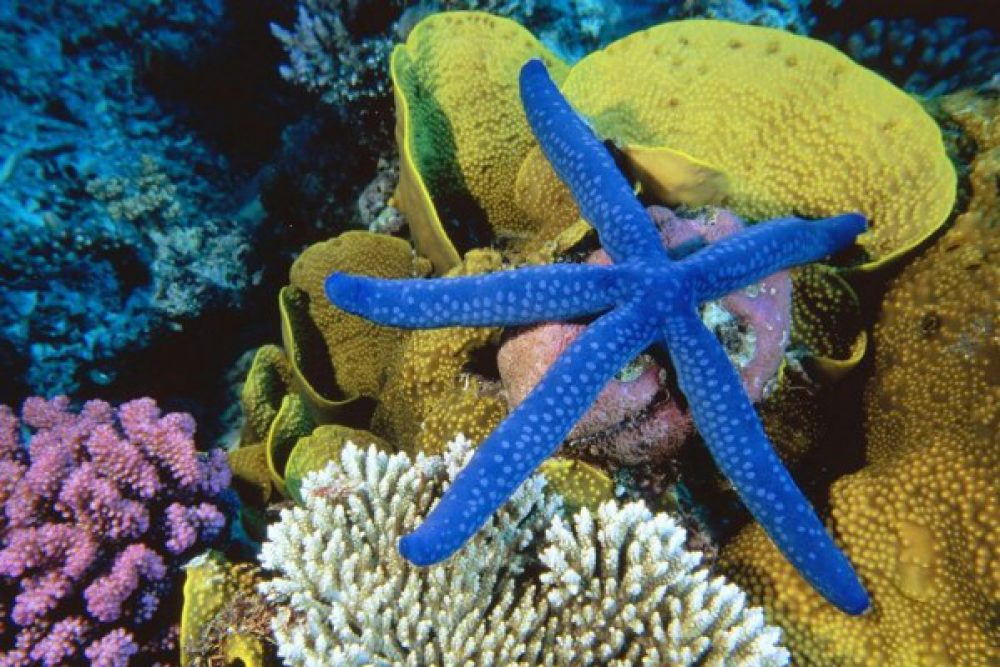 Below are five synopsis and key reflections on the Global Eco Conference, presented by researchers from Griffith University who are involved in diverse research projects related to the Great Barrier Reef.
Below are five synopsis and key reflections on the Global Eco Conference, presented by researchers from Griffith University who are involved in diverse research projects related to the Great Barrier Reef.
Susanne Becken: The Global Eco Conference revealed deep contrasts and seemingly insurmountable chasms between old thinking of growth as the solution to everything, and those (admittedly a minority) who see growth as one of the root causes of many of the challenges we face. Carbon emissions – including those from tourism – received particular attention, although solutions did not move beyond singular success stories that seem driven by highly dedicated individuals who want to make a difference through their business.
As the saying goes, however, ‘follow the money’ – and the large-scale investments currently made by Government do nothing more than stimulate new infrastructure (without clear sustainability or resilience standards attached as a key criterion, it seems) and increased visitor growth. The focus continues to be on marketing and predict-and-provide. It seems to me, therefore, that at this point the ‘royal we’ are caught up in wanting to have the cake and eat it too.
Johanna Schliephack: Protecting the Great Barrier Reef requires a holistic approach that links land use, fisheries, tourism management as well as specific resilience programs aimed at restoration and conservation of keystone species. However, climate change is affecting all of those and hence needs to underpin all management strategies regarding the reef. Everyone’s actions are needed to tackle climate change and tourism enables people to visit and interact with the reef which many argue enhances people’s awareness about the severity of the threat, leading to action including a change in behaviour.
Tourism is comparatively carbon intensive, therefore increasing tourist numbers to the reef will likely add to the underlying threat and more immediate and drastic actions are required. So what can tourism do to help? Stronger incentives are required for businesses to become carbon neutral and give back to the environment (case studies have showed it can be done). From a long term tourism management perspective, a better understanding is needed of what a 2-3°C scenario will look like, which has barely been touched on, so the industry can start preparing for a transition.
Rawan Nimri: Ecotourism needs to move beyond being a buzzword and should become a mainstream tool, offering sustainable-rich experiences. A broader range of stakeholders, including tourists should work together for the universal adaptation of sustainable tourism principles. Currently, increased environmental awareness amongst tourists indicates that they are willing to pay for unique experiences that benefit local communities and do not negatively impact the environment. Therefore, the progression of iconic new experiences should provide an opportunity to educate and inform tourists about the natural values and cultural heritage aiming to increase public support.
Nevertheless, confusion on what eco, sustainable, responsible tourism (or any other name variation) exists among tourists. Consequently, there is a need to adopt a different approach through sharpening and simplifying these terms and focusing on better communication schemes. Tourists want to live like locals through active participation and interaction with the local communities and culture. This could be achieved through the provision of unique experiences that promote green endeavours by changing the views of luxury and looking for sanctuary. It also means that changing tourists’ behaviour and increasing awareness of how tourists’ actions can make a difference (positive and negative) is becoming a priority.
 Dung Le: Global Eco conference 2018 was the place where academics, governmental officials and tourism businesses engaged in conversations regarding climate change and the protection of the Great Barrier Reef. Everyone recognised that climate change will have detrimental effects on the reef and that we need to act urgently. The challenge is that there is no clear answer on how to act. Ecotourism is the best answer so far. However, the conference highlighted how tourism businesses and management organisations (e.g. national parks) get trapped in a sustainable development paradox. On the one hand, they aspire to be more sustainable and green by applying advanced technologies (solar energy, wind energy) and conservation programs. On the other hand, they still want economic growth through attracting more tourists to their places. This in turns causes increasing carbon emissions and pollution. This apparent contradiction also confuses tourists, who – maybe as a way to solve the dilemma – feel little responsibility in protecting the reef.
Dung Le: Global Eco conference 2018 was the place where academics, governmental officials and tourism businesses engaged in conversations regarding climate change and the protection of the Great Barrier Reef. Everyone recognised that climate change will have detrimental effects on the reef and that we need to act urgently. The challenge is that there is no clear answer on how to act. Ecotourism is the best answer so far. However, the conference highlighted how tourism businesses and management organisations (e.g. national parks) get trapped in a sustainable development paradox. On the one hand, they aspire to be more sustainable and green by applying advanced technologies (solar energy, wind energy) and conservation programs. On the other hand, they still want economic growth through attracting more tourists to their places. This in turns causes increasing carbon emissions and pollution. This apparent contradiction also confuses tourists, who – maybe as a way to solve the dilemma – feel little responsibility in protecting the reef.
A number of inspiring success stories were presented, such as the evolution of Lady Elliot Island or the “straw no more” campaign, bringing hope for addressing climate change issues. More instructions from the government and environmental experts are needed to involve both tourists and tourism businesses in sustainability and guide their actions. Maybe the tourism industry should start with small but specific sustainable initiatives to make a difference.
Emily Chen: How can Big Data help with Eco Tourism? When I listened to the problems related to climate change and the Great Barrier Reef, and how this will affect biodiversity as well as human beings, I felt it is such a big problem that it is impossible for an individual to solve it? However, when Molly (#strawnomore) went up to the stage, talking about stopping using plastic straws and how many people she has influenced, it made me feel that we can make a difference if we are guided well.
Big data can help us to ‘listen’ to people. Anna Marsden from the Great Barrier Reef foundation presented a survey about how Australians feel about the GBR. Understanding what people think is important for spreading ideas about the small things we can do to protect the reef. Big data can help in this, for example by campaigning through social media; resulting data can then be analysed to see how people engage with the reef, if and where they visit etc.
 Big data can also help to manage overtourism. We can learn from China. In 2013 the famous tourist attraction on the Tibetan Plateau, JiuZhaiGou World Heritage Area, suffered from acute over-visitation during the October “golden week” holiday. With suddenly increasing tourist numbers during the peak season, the park did not assign enough buses to transport visitors and over 2000 tourists could not leave the park. The Forbidden city in Beijing is another famous example of overcrowding – bringing not only bad travel experiences but also damage to the attraction. Both JiuZhaiGou and Forbidden city now limit the number of tourists per day and give different price for peak and off season. They encourage people to book ticket online so they can plan in advance by knowing number of tourists. Tourist movements are monitored using GPS and this informs on site management.
Big data can also help to manage overtourism. We can learn from China. In 2013 the famous tourist attraction on the Tibetan Plateau, JiuZhaiGou World Heritage Area, suffered from acute over-visitation during the October “golden week” holiday. With suddenly increasing tourist numbers during the peak season, the park did not assign enough buses to transport visitors and over 2000 tourists could not leave the park. The Forbidden city in Beijing is another famous example of overcrowding – bringing not only bad travel experiences but also damage to the attraction. Both JiuZhaiGou and Forbidden city now limit the number of tourists per day and give different price for peak and off season. They encourage people to book ticket online so they can plan in advance by knowing number of tourists. Tourist movements are monitored using GPS and this informs on site management.
Big data can help, but one thing is for sure: if we care about environment or knowing there are things we can do, like use less plastic… together we can make a difference.
